
This article from The Guardian discusses a Danish researcher who connects current day right wing conspiracy theories with 16th century witchcraft scares.
Michael h. Webster Photography
Michael h. Webster Photography

This article from The Guardian discusses a Danish researcher who connects current day right wing conspiracy theories with 16th century witchcraft scares.
Chuckling in the Bardo is a short fiction. You can take it literally or figuratively. It’s very loosely based on the Bardol Thodol, or Tibetan Book of the Dead, a Buddhist text that describes an intermediate state between life and death in which the narrator faces a number of tests, including strange landscapes, lost souls, peaceful and wrathful deities that determine whether he will achieve enlightenment or be reborn, possibly to a better station, possibly much worse.
The Music is by Sturgill Simpson, from his album Sound and Fury. Ronin and some of Remember to Breathe. If you are unfamiliar with it, you should definitely watch the video he had made with top Japanese anime artists for the album on Netflix. Just search for Sound and Fury, or Sturgill Simpson.
Should anyone come across this questionable use of copyrighted materials, I consider it fair use as this is a private post, not visible to the world, no more than five people will see it, and it won’t be up for long.
My wife is really into what they call “police procedurals,” and the like. Things like NCIS, Bones, Castle, and who knows what else as there are so many and it is difficult to tell the difference between them. Last night it was “Wisdom of the Crowd.” Anyway, I can’ help to notice that they are all fast paced and centered on violence, most often – if not always – murder.
I noticed this, or noticed it yet again, because I’ve been watching two much slower moving shows that are centered more on regular people.
I really enjoyed “Patterson,” reviewed here by Glenn Kenny, which is definitely slow moving. It may even be a great movie. Time will tell, of course, but it is easily my favorite by Jim Jarmusch so far.
“The film feels like one in which nothing is happening, but it’s not happening beautifully…” writes Kenny.
Nice line, and I don’t mean to do Glenn any disservice, but a lot is happening, and it is happening beautifully.
Just one thing: Living out here in this bizarre 90+ percent white America, the film made me nostalgic for the real America found more often in the cities and surrounding metropolitan areas. The film in no way does anything to draw attention to it, but the entire plot takes place in a diverse culture, with different looking people from radically different backgrounds interacting in a friendly and polite manner – or you could say, just like real life. Only one scene is at all violent, but by any modern standard it is not very violent, and it succeeds in deepening our understanding of the character, or at least opening up a mystery. And there’s a lot more to the film than those elements. Kenny suggests that multiple viewings are rewarded with deeper understandings. I look forward to seeing it again.
On Netflix I’ve been watching Detectorists, which is a slow-moving British comedy about metal detector enthusiasts. What more needs to be said, really? A British comedy about metal detector enthusiasts. Dry humor? Pathos? You betcha. Violence and murder? Not so much.
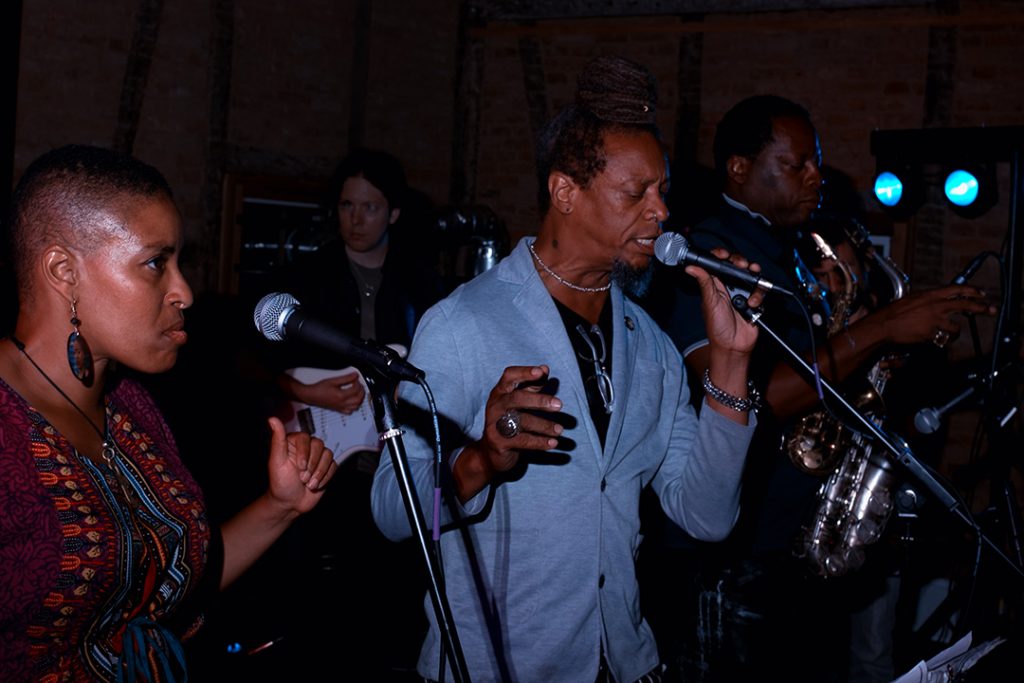
New York’s Burnt Sugar, the Arkestra Chamber played Black Lodge Coffee Roasters in New Harmony, Indiana. Burnt Sugar is a collective of over 30 very accomplished musicians. Last night’s lineup featured Shelley Nicole and Mikel Banks on vocals, Jared Michael Nickerson on Bass, Micah Gaugh on Sax, LaFrae Sci on drums, Leon Gruenbaum on keysand Ben Tyree on Guitar.
Burnt Sugar ‘s music moves in and out of many genres, but generally inhabits a Jazz – Soul – Funk space. And as their name implies, Sun Ra is a major influence, but far from the only one. I had one of their records on while driving the other day, drifted off and thought I was listening to Eddie Hazel era Funkadelic, which actually is one of their other primary influences. But their influences are all over the place. They opened the show with “Lonely Woman” the Ornette Coleman classic from his seminal album “The Shape of Jazz to Come,” which featured incredible drums and sax from Lafrae Sci and Mica Gaugh.
Check out those links, and check out their music. And if you like their music, check out Rebellum, an offshoot band with many of the same members that played the New Harmony show. The Rebellum song, Rockstar Amnesiac, was one of the (many) highlights of the show.

Burnt Sugar made the small town stopover between gigs in Nashville and Chicago. New Harmony, however, is not just any small town. The site of two early 19th century Utopian communities in the early 19th century and the playground/museum for one of the wealthiest women in the world for the second half of the 20th, it has a long history as a friendly place for artists, musicians, skilled craftspeople, intellectuals, and generally interesting folk.

In recent years, a fascinating music scene has been developing in New Harmony. Chris Layer’s annual Music Festival and School brings in top flight musicians from all over, including Mazz Swift, who is also a member of Burnt Sugar, although not part of this particular show. More recently, Marc Chevalier, a longtime Nashville recording engineer and his wife have opened a coffee roasting business and coffee shop and have begun bringing more worldly and alternative bands to town. Marc’s sound engineering took last night’s concert to the next level. World class band, world class sound, world class little town. Nice experience all around.
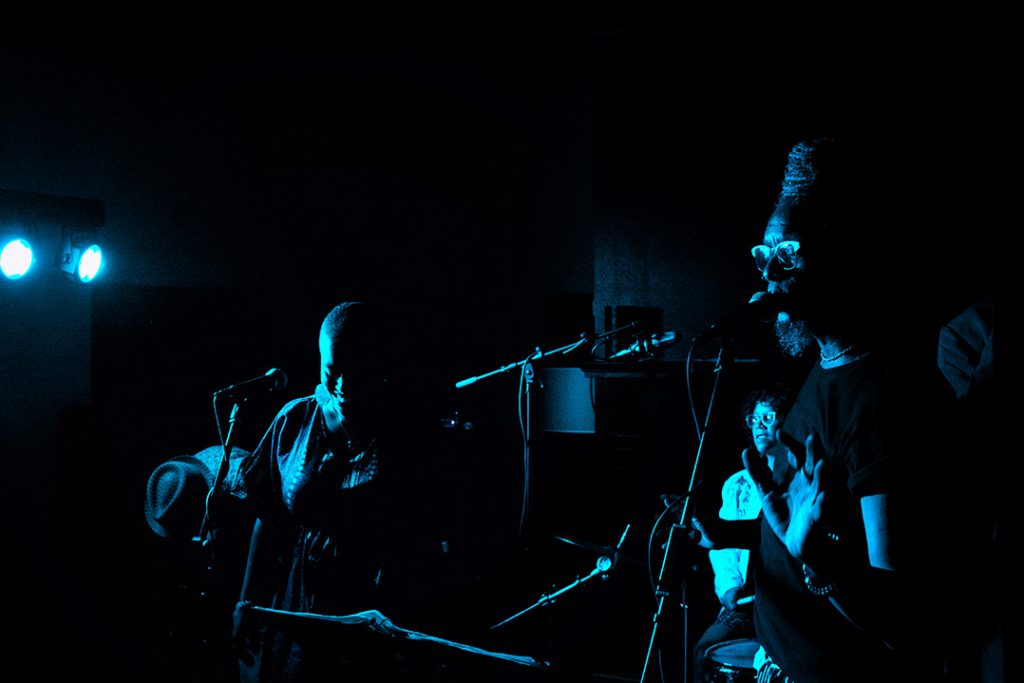
In one of the more extreme examples of what a small world we live in, and how great New York is, Lafrae Sci recognized my wife and I. Turns out she briefly worked at our son’s school in Brooklyn 10 or so years ago – and was one of his favorite teachers ever – and she somehow remembered us. Lafrae is one of the world’s premiere Jazz drummers. New York is like that. Anyone you meet in the workaday world could be supremely accomplished in some aspect of the art world.
The whole night – great music, talented people at the top of their game – made me really miss the big city. And the happenstance of running into Lafrae did too. You know, lately we’ve been living in a small town of 7000, and it was more common for us to run into people we knew in Brooklyn that it is to run into people we know here. Hell, it was just about as common running into Dennis Leary in New York as running into high school friends in my little hometown. People in New York get out a lot. Here, not so much. I recognized it a long time ago, but I still find it odd. Brooklyn today, and much of New York City, is more like the small town I grew up in than the current version of small town I grew up in.

This photo is from the Flags of Valor: A memorial for hour Fallen American Heroes exhibit in Saint Louis. When I took it, I envisioned it as part of what I consider my Naive Photography effort. For me, Naive Photography is about presenting staged, wholesome events without any kind of irony or ill will. Its purpose is the purpose of the subjects: to make the subjects happy; and some sort of effort to boost community pride. I believe there are deeper meanings to be found in these kinds of efforts, but I admit I’m having trouble finding them. I recently had a hard drive crash that possibly meant the loss of two years of this kind of work, and I didn’t even care.
Anyway, the point is that when I took this photo, I had no ill will towards these gentlemen, nor against the military, the flag, veterans, the war dead, or anything else. I envisioned it as an Instagram photo, and possibly something for the larger Naive Photography effort. I figured the military would encourage their members participating in this kind of thing. It makes them look good in a way they want to look good, and shows them as an integral part of the community.
But when I asked them for their names so I could put them in the captions, they got very weird and defensive and refused to provide them, saying they were afraid they would get in trouble with the Public Relations people. Perhaps that was true, but I got the impression they used that as an excuse, that there was also some deeper kind of fear. A mistrust of the public. A fear they would be attacked.
I found the whole exchange disturbing. I think it’s a bad sign when the military fears the people. And I think it’s a bad sign when soldiers are even allowed to be anonymous.
And I really can’t imagine what they were afraid of? Did they think I was one of those miltary-hating unicorns, and that I might Photoshop them into a porn image, or something like that?
I say “military-hating unicorns” because the only people I’ve ever met who hate the military were people who served in the military. I don’t think I’ve ever known any civilians who hate the military, certainly not the individual soldiers who serve in it. Sure, I know plenty of people who hate how the politicians have used the military, but that’s a different thing altogether. And I know plenty of people who criticize the military when individual service people commit war crimes and atrocities, such as Mai Lai or Abu Ghraib, but again, that’s not hating the military.
Anyway, I notice it’s 9.11, so maybe this is apropos.
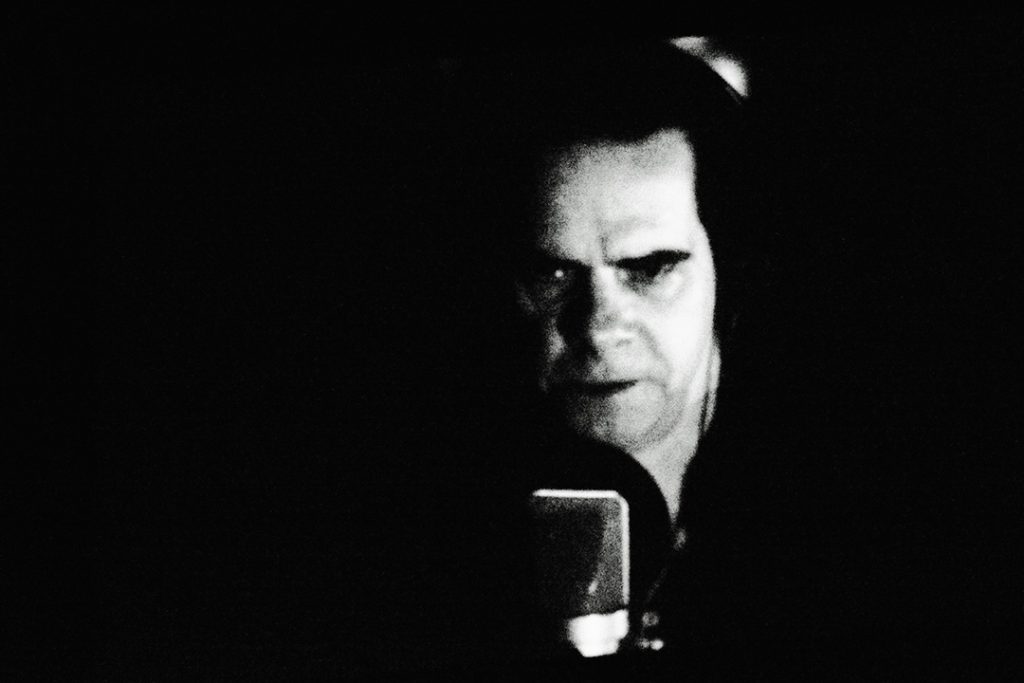
I saw Nick Cave’s new film “One More Time with Feeling” the other night. It documents the making of Skeleton Tree, his new record, and delves into his feelings about the tragic death of his son Arthur.
Going in, I figured it would be a gut-wrenching experience, and there are a few of those moments, but it has it’s lighter moments as well. I was surprised to find myself laughing out loud a few minutes into the opening scene when the camera malfunctioned as Warren Ellis was giving an emotional speech, and then the soundtrack continued with Ellis bitching about the documentary. Many of those lighter moments are associated with the film’s meta critique of the documentary filmmaking process. Overall, the film was much more about the creative process than about Cave’s grief.
So as a viewer, just like the participants, I found myself critiquing the filmmaker, and the manufactured elements of the film as a documentary, such as performing interviews in the back of a car while driving around; or, as the title of the film alludes to, the overall artificiality of placing people in fake scenes and manipulating how they communicate to the camera.
Otherwise, the film consists of interviews with Cave, Warren Ellis and Cave’s wife Suzie about the making of Skeleton Tree, Cave’s creative process in general, and their emotional states concerning Arthur’s passing. Cave narrates a closely-written voiceover throughout much of the film that gives it an overall coherence.
The film was shot in black and white, except for one incredible color sequence that made me wish the whole thing was shot in color. And my understanding is that it was shot with a 3D camera, as well, but apparently the theater I saw it in didn’t do 3D. Anyway, much of the cinematography was excellent.
Warren Ellis’s work is almost as much a part of Nick Cave’s music as Cave is himself. In the film, you see Ellis creating the soundscapes, directing the other musicians, and genuinely collaborating with Cave on how the songs are constructed.
Whether you would want to see it probably depends on how much you like Nick Cave; or possibly if you are interested in the grieving process and how one very creative couple and group of friends are handling it. Skeleton Tree is not one of Cave’s more accessible records. There are no rockers or guitar solos. Few of the songs have any kind of traditional narrative or even refrains. It sounds more like one of Cave/Ellis’s soundtracks than a Bad Seeds record. The songs are built on elegiacal notes that alternate their resonance. More of a A few of the songs contain not-too-distant-echoes of material from Push the Sky Away. “Jesus Alone” is the closest thing to a regular song on the record, and it’s not very close.
I like it a lot, but I think Cave is one of the great artists of your time, so I am inclined to give it the time and consideration it deserves. To experience either the movie or the record requires slowing down. Slowing way down.
[wonderplugin_gallery id=”3″]
The other day I drove by this old fashioned carnival as they were setting up. The mechanical rides, games and concessions were much the same as when I was a kid, so I came back and did a hit-and-run photo project on Saturday night. This is a coal mining region in southern Illinois where, as more than a few people I spoke with informed me, most of the mines have closed in the past few years; several adding something along the lines of “thanks to our wonderful president.” Somehow I managed to keep from saying “Obama caused global warning? But of course he did.”
Anyway, although this is just a quick hit-and-run, and it shows, I think these old carnivals might make for a good project. Maybe next summer?
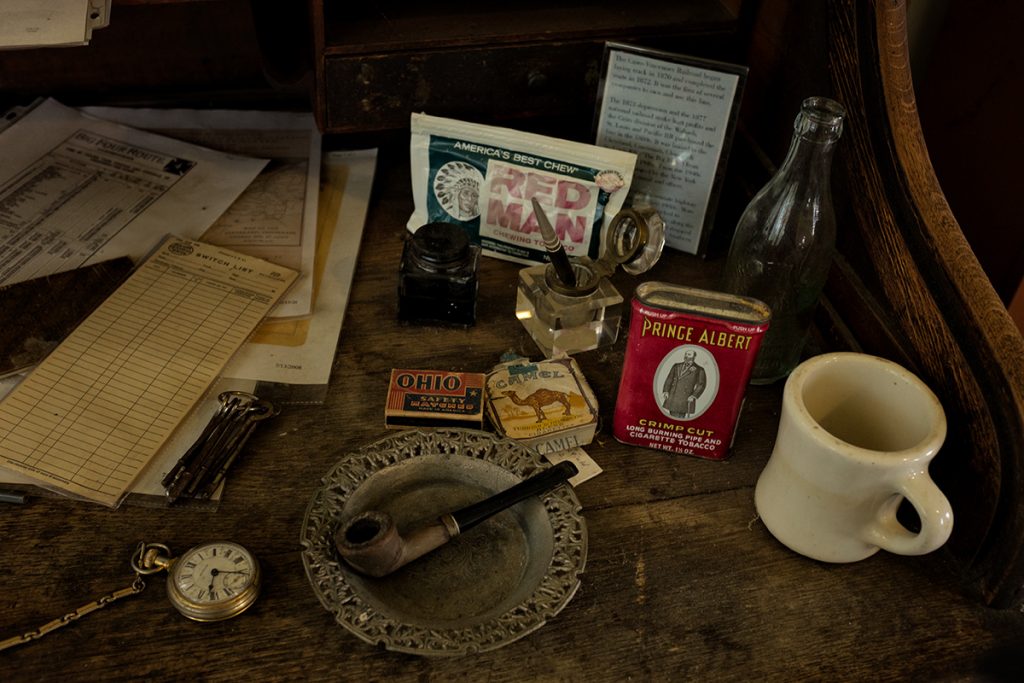
A friend and I went out looking for a new swimming hole the other day in Shawnee National Forest. On the way we stopped in a little museum located in an old train depot. At first glance, you probably thought the above photo was my desk, but it’s actually an exhibit in the Stonefort Depot Museum.
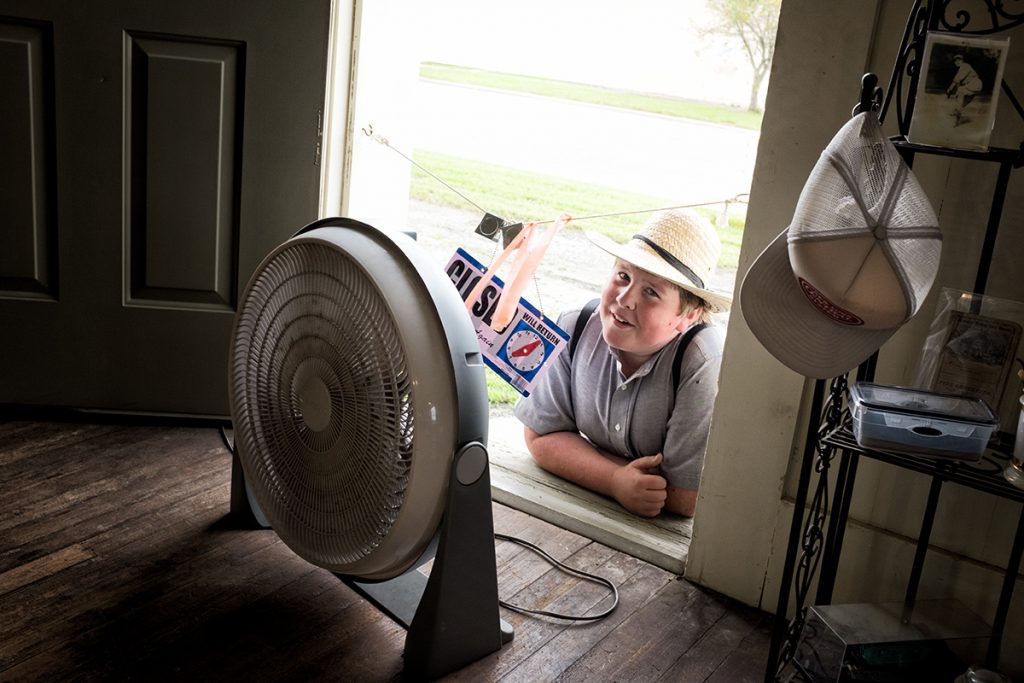
While I was there I got to inadvertently insult this little Mennonite boy by first mistaking him for Amish and then thinking he might not be allowed to have a camera. Yes, he can and does have a camera and loves taking pictures with it. Stupid English, he probably muttered under his breath. Or do only the Amish use that term?
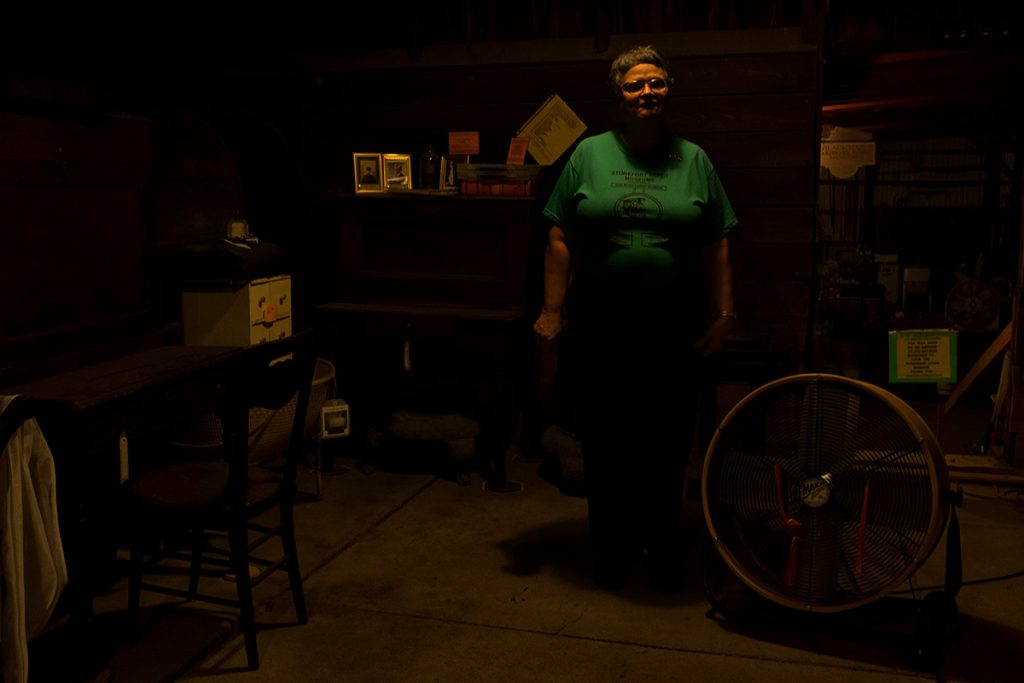
Above is the museum’s owner and operator, Linda Blackman. Linda gave us a personalized tour and was a great sport posing for photos, even silly ones like this one. We very much enjoyed meeting her and learning about the museum.
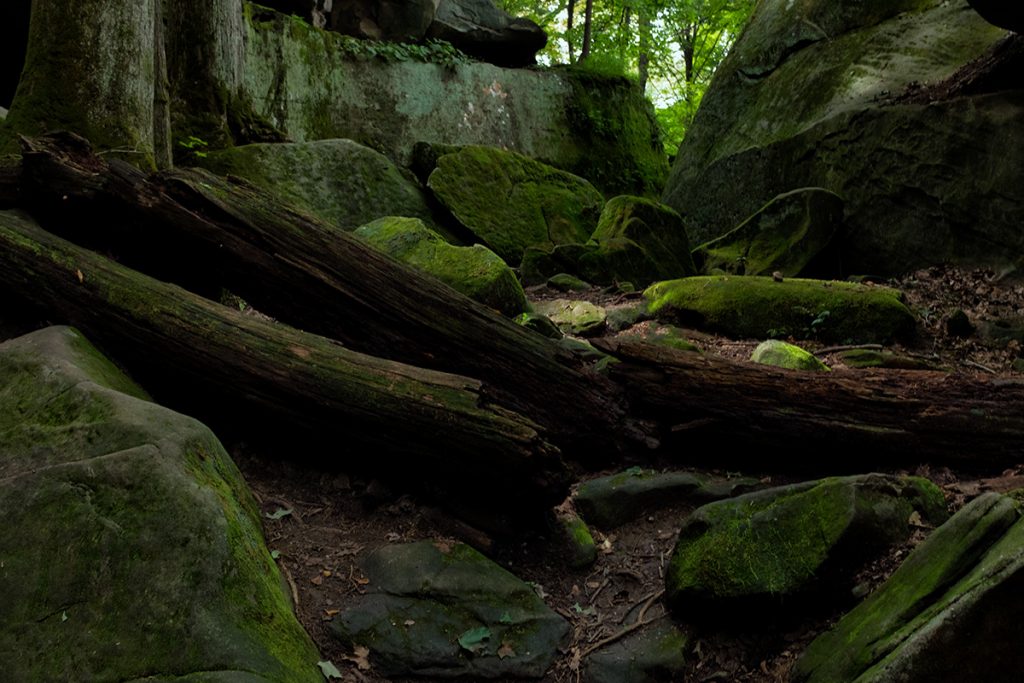
It turned out there was a bit of a hike to get to the swimming hole. It appeared to be in a box canyon with sheer cliffs on both sides. Appearances, however, proved to be deceiving. I lagged behind my friend to take the above photo. Then I came to a place where one trail went left, the other right. I could tell that the trail to the right was the one most traveled and I was sure it led to the swimming hole. But the one to the left looked more interesting, and I was sure it would lead to the swimming hole as well, being as it was a box canyon. Turned out that it wasn’t a box canyon, though, and I hiked a long way on a very hot and humid day, and of course kept going long after I was sure I had gone the wrong way, just on the hope that it was right over the next hill. But it wasn’t and I had to turn around and hike all the way back. On the positive side, I ran into some people who had given us directions earlier who were now lost, and was able to send them in the right direction.
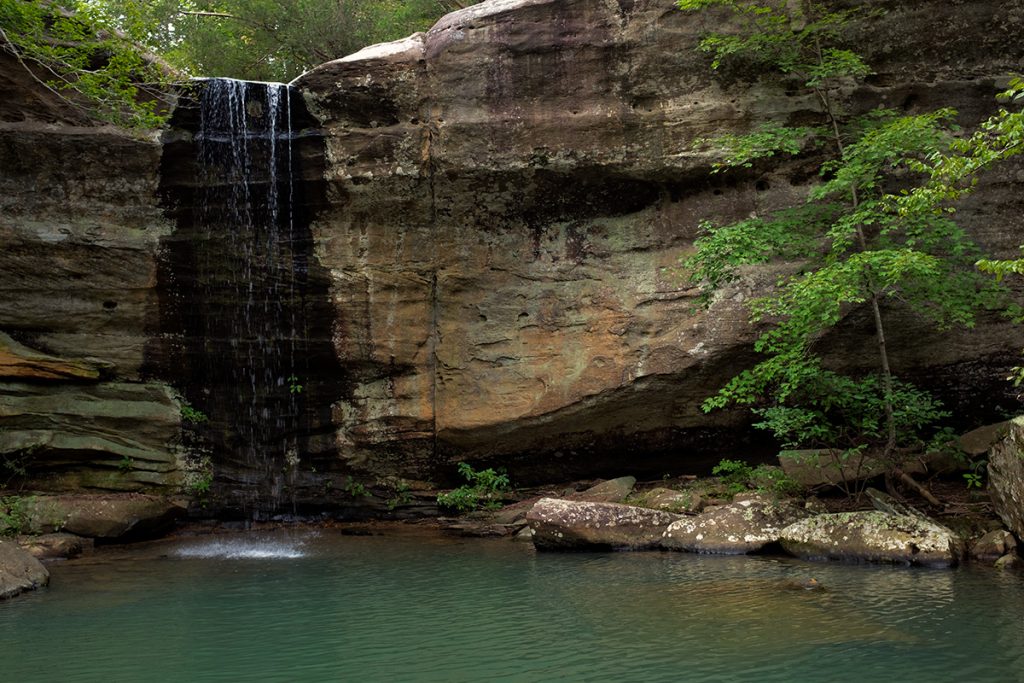
I finally got to the swimming hole, literally drenched in sweat, which was great because the water was very cold and diving in was incredibly refreshing. That little swim turned out to be the best I’d felt all summer, and I’ve felt pretty good a number of times this summer.
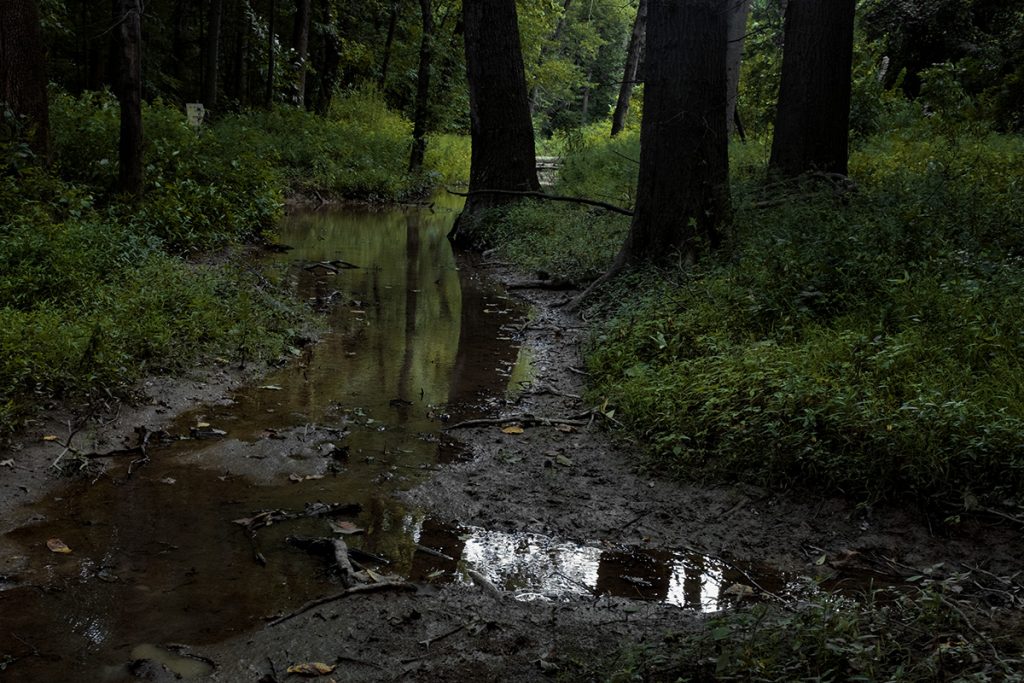
These photos are from this morning’s hike. Rather than go somewhere I knew would be nice, I chose to explore new lands. I knew odds were good I wouldn’t come across anything very interesting. But you never know until you try.
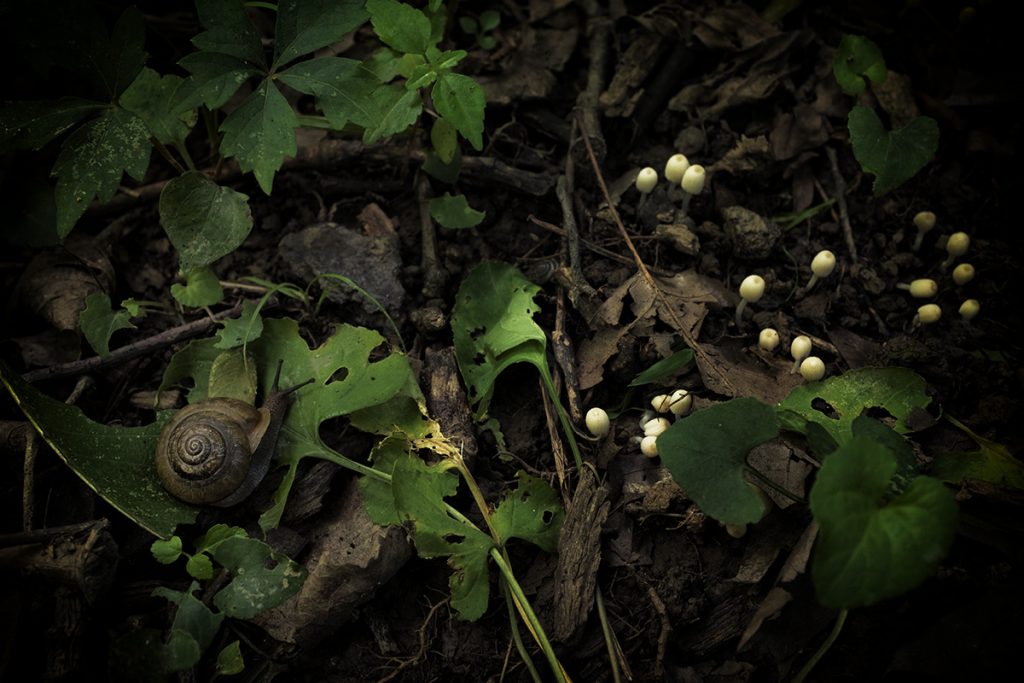
I don’t do it as much as I used to, but one of my favorite photo exercises is to work a superficially boring place until I can find a way to make it visually interesting. The first time I remember doing that was at a parking lot outside a Comfort Inn in Tysons Corner, Virginia, which has to be one of the more boring places on earth. Over the years, I got pretty good at photographing parking lots in suburban wastelands. It’s a good skill to have. Really makes you think about composition. The lessons learned can be applied in a lot more interesting situations.
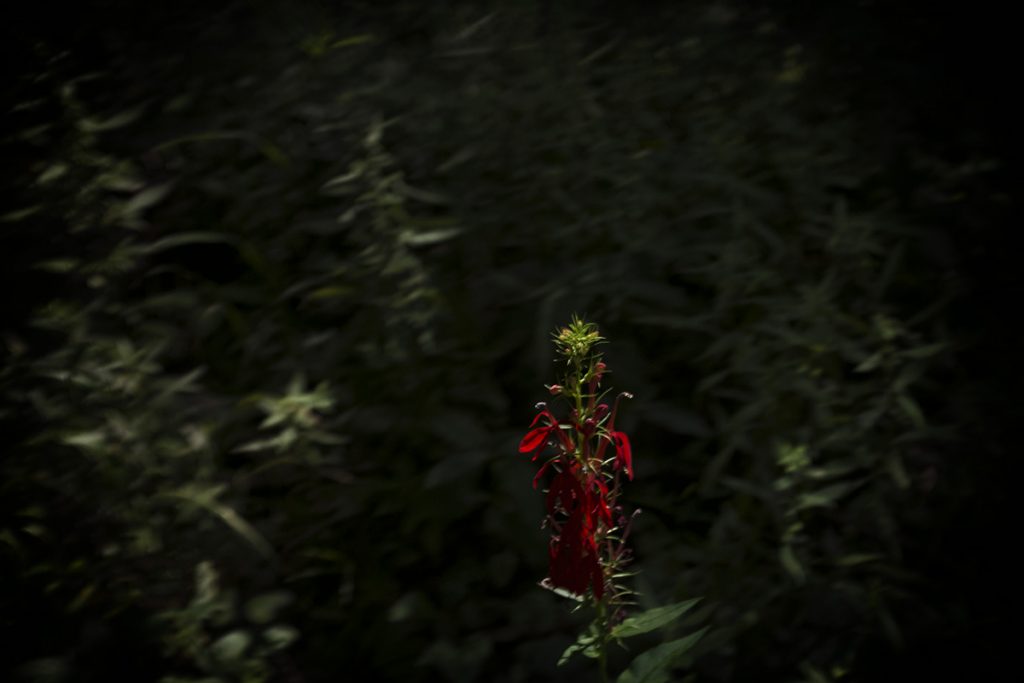
Although not nearly as challenging, it’s a good exercise to do in nature, whether you are a photographer or not. You may think you’ve walked a long way across boring fields only to end up at an ugly little stream in a muddy swamp, but if you sit in the same place long enough, interesting things about the place will eventually reveal themselves. Try it. You’ll see.
For extra credit, contemplate the idea that there’s no such thing as bad light.